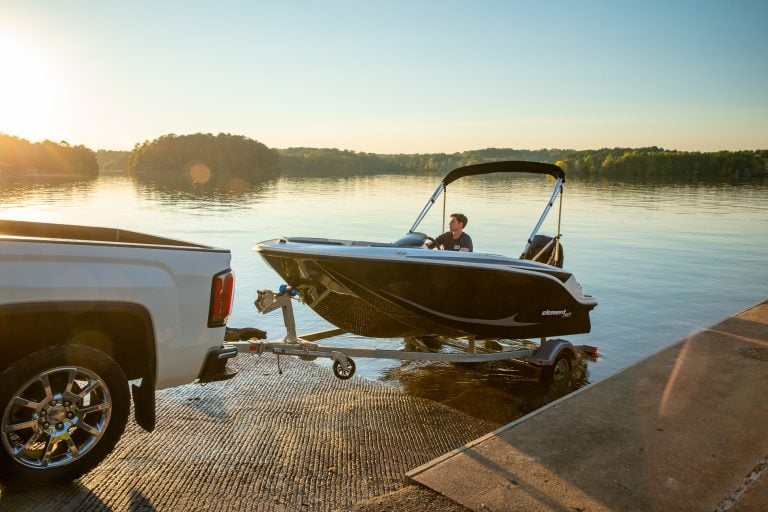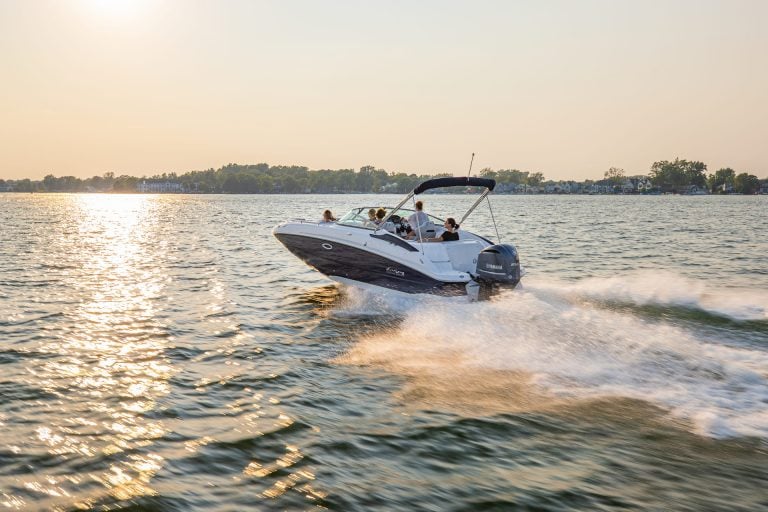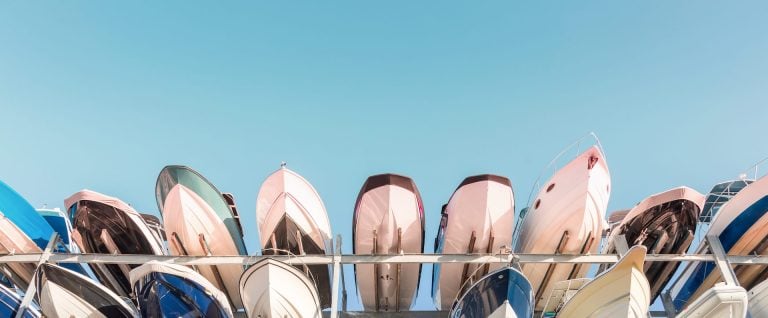Before you set out on the water, you need to know how to anchor your boat. We’ve got you covered with this step-by-step guide to the anchoring basics you need to know.
Anchors keep your boat from drifting away with the current or wind. They’re usually made of metal, so we tend to think of them as being particularly heavy, but that’s not always the case, especially for recreational boats. Instead, anchors latch onto the bed of a river or lake with arms that dig into the sand or mud. After connecting with the bed, the anchor will tip over due to the tension created by the boat, and in doing so latch into the bottom of the body of water.
Remember: anchor from the bow of your boat, not the stern. It’s possible to anchor from both the bow and the stern to further stabilize the boat, but you should never only anchor from the stern; you could capsize the boat.
Always use a chain that’s about as long as your boat and shackle it to the anchor. On the other end of the chain, connect your rope. The weight of the chain will help ensure that your anchor tips over and grips into the bed. The wind or current should be coming from the direction of your anchor and hit against the bow of your boat, creating tension on the line.
Setting
After dropping your anchor, you’ll need to set it.
To set your anchor, you’ll need to pull your boat in reverse to create tension and lock its arms into the bed. If the anchor doesn’t stay put when you create tension for at least several seconds, you’ll need to start over.
Scope
You’ll need to determine your scope, or how much rope you will need to anchor your boat. Opinions vary, but it’s generally a good rule of thumb to multiply the depth of the water by three to come up with the right amount. Others suggest using seven times the amount of rope as the length of your boat, but this might not be practical if there are many other boats in the area.
Resetting
When the anchor sets, it tips over in the direction of your boat. If your boat is pulled by the wind or current so that it moves to the opposite side of the anchor, the tension will be eliminated and you’ll need to reset the anchor.
The type of anchor you use will depend on your type of boat, the underwater terrain, and the weather conditions. There are types of anchors that work best in different circumstances. For recreational boats, the most common are fluke anchors, plow anchors, and scoop anchors. All three work well with sand and mud, and plow anchors also work well with rock.
Can you drop anchor anywhere?
No, you can’t drop an anchor wherever you’d like. Local laws and regulations may restrict anchoring in specific locations, including channels, fairways, and near mooring locations in harbors. There may also be restrictions on anchoring for environmental precautions and recreational reasons, and some areas might be too rocky for your anchor to catch, depending on the kind of anchor you’re using.
How do you anchor a boat in deep water?
To anchor a boat in deep water, you’ll need to have enough rode, or line, or reach the bottom. Using the same rule as applies in shallower water, you’ll need at least three times as much line as the depth of the water. While you can use a few different kinds of anchors, claw anchors may work the best in deep water. Attach your anchor to the line using a chain that’s about as long as (or longer than) your boat.
What happens if an anchor gets stuck?
Pull your boat around so you’re above the anchor and the line is running straight. Wrap the line once around a bow cleat (called tailing off) to provide tension, but not too much — you don’t want to tip the boat. If this simple tension doesn’t do the trick, try slowly moving your boat in the opposite direction of the anchor. It’s important to do this gently, or you’ll risk pulling the bow of your boat under. If your anchor still won’t budge, you may have to end up cutting the line and abandoning it.
Need a new anchor or line? Check out our Parts & Accessories Catalog.


